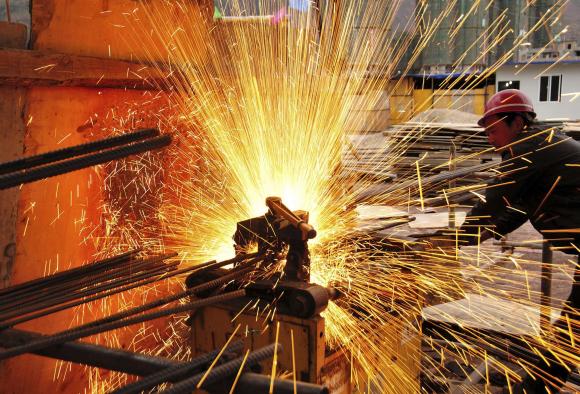Retreat, regroup and rebound
By MARIOS MARATHEFTIS (China Daily) Updated: 2015-12-18 07:33
 |
|
A worker welds at a construction site in Yiliang, Yunnan province, February 28, 2015.[Photo/Agencies] |
There is good news and not-so-good news as we head into 2016.
The not-so-good news is that the world economy still lacks momentum, with global growth unlikely to pick up next year. We expect growth of 3 percent, the same as 2015. But the good news is that, despite the lack of momentum in the world economy, we expect confidence and market sentiment, particularly in emerging markets, to improve.
Emerging markets have been in retreat in 2015, but there are reasons to be cautiously optimistic in 2016. The two main reasons behind the negativity this year-the US Federal Reserve (Fed) interest rate hikes and the risk of a "hard landing" in China's economy-should be much less of a concern in 2016. It is time to regroup.
We always thought the first Fed rate hike in nine-and-a-half years would be an event. We highlighted as far back as April 2015 that volatility in emerging markets would increase and that some currencies, like the Turkish lira, the Indonesian rupiah and the Brazilian real, would weaken. So the weakness and negativity we saw in the second half of 2015 did not come as a surprise.
With the first interest rate hike announced this week, we expect another hike to take place in March 2016. And that is it; we do not expect more rate rises in 2016. In fact, we anticipate that after March the Fed's next move will be to reduce interest rates, and we see this happening in December 2016.
We believe the hiking cycle will be shallow because, in our view, the US economy has already peaked. Consensus forecasts point to US growth at 2.5 percent next year, but these forecasts have been consistently wrong over the past six years, always overestimating growth prospects in the US. We are less optimistic, expecting the US economy to grow by 1.6 percent. If the anticipation of Fed hikes spooked markets in 2015, and rightly so, the realization that the hiking cycle will likely be very shallow by any historical standard should be positive for market sentiment.
China concerns also played a key role in keeping sentiment around emerging markets negative. Markets have behaved in a way consistent with a China "hard landing". In 2015, closer focus on certain proxies for China's economy suggested that growth was much slower than official data implied, hence the negativity.
But concerns were overdone and not fully justified. The proxies used by many were heavily biased towards the manufacturing sector. Manufacturing in China is indeed slowing; but the service sector is strong, and it is growing in importance, contributing more than 50 percent to the economy today. Looking at cement, electricity and railway cargo might have been a good proxy for growth five-10 years ago, when manufacturing dominated, but this is no longer the case. The structure of China's economy is changing.
Also, people should not underestimate the commitment of Chinese authorities to deliver growth rates close to 7 percent. Policymakers take every opportunity to remind us that they have an official target of doubling 2010 GDP by 2020. This requires an average annual growth rate of 7 percent. So far they are ahead of plan, and the Fifth Plenum of the 18th Central Committee of the Communist Party of China-which took place this autumn-set an average growth target of 6.5 percent for the next five years. We expect Chinese growth in 2016 to be 6.8 percent, giving the authorities room for possible deceleration in the future.
That is not to say that there are no risks. China's economy is becoming more complex. Gradually opening up to international markets by liberalizing the capital account will make the economy harder to manage than in the past, especially given high domestic debt levels. But policymakers have tools at their disposal.
Global growth has never really taken off since the global financial crisis. As 2016 is unlikely to be any different, it is hard to get too excited about the economic prospects. The silver lining is that confidence and market sentiment should improve.
The author is chief economist at Standard Chartered.

I’ve lived in China for quite a considerable time including my graduate school years, travelled and worked in a few cities and still choose my destination taking into consideration the density of smog or PM2.5 particulate matter in the region.











